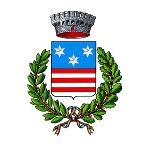I Giudei a Geraci
Ultimo aggiornamento: 17 ottobre 2024, 10:27
Dal codice diplomatico dei giudei di Sicilia raccolto e pubblicato dai Sacerdoti fratelli Lagumina Bartolomeo e Giuseppe si rileva che tanto nel Marchesato come nella terra di Geraci, numeroso era lo stuolo degli Ebrei - con la salvaguardia regia data in Messina il 28 maggio 1492, fu protetta fra le altre la Giudaica di Geraci.
Il Vicerè Ferrando De Acugna con atto 5 giugno 1492 commette a Michele La Bruna di esigere tarì uno da ogni casa giudaica delle seguenti terre di Sicilia: “ A Judajca terra Girachi uncia una et tarinorum 23”, il che fa capire che vi erano 53 case giudaiche.
Il detto Vicerè ad istanza dei giudei di Agosta, Calascibetta, Caltabellotta, Caltagirone, Cammarata, Castrogiovanni, Castronovo, Castroreale, Geraci, Giuliana etc., ordina agli Ufficiali di quelle terre, di riconsegnare loro per venderli, i beni mobili ed immobili tanto privati che della mischita, purchè diano malleveria di cristiani facoltosi.
Ancora oggi è possibile documentare il passaggio dei giudei per Geraci. Esiste infatti un vicolo denominato “Vicolo Giudecca”.
Nella foto: Vicolo Giudecca
***************************
The Jews in Geraci
From the diplomatic codex of the Jews of Sicily collected and published by the Lagumina Brothers Priests Bartolomeo and Giuseppe it is noted that both in the Marquisate as well as in the land of Geraci, numerous was the throng of Jews-with the royal safeguard given in Messina on May 28, 1492, was protected among others the Judaica of Geraci.
The Viceroy Ferrando De Acugna by deed June 5, 1492 commanded Michele La Bruna to demand tarì uno from each Judaica house in the following lands of Sicily: " A Judajca terra Girachi uncia una et tarinorum 23," which suggests that there were 53 Judaica houses.
The said Viceroy at the instance of the Jews of Agosta, Calascibetta, Caltabellotta, Caltagirone, Cammarata, Castrogiovanni, Castronovo, Castroreale, Geraci, Giuliana etc., ordered the Officers of those lands, to hand back to them to sell them, the movable and immovable property both private and of the mischita, provided they gave malleveria of wealthy Christians.
Even today it is possible to document the passage of Jews through Geraci. In fact, there is an alley called "Vicolo Giudecca."
In the photo: Giudecca Alley

